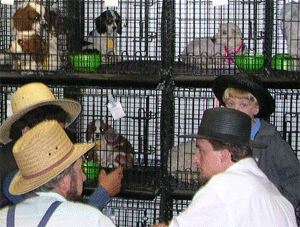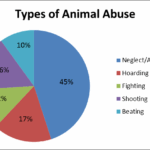The Amish community is often perceived as a bastion of simplicity, adhering to centuries-old traditions that govern their way of life. Shunning many modern conveniences, they cultivate a lifestyle steeped in agrarian values, which raises a pivotal question: Do Amish raise animals cruelty-free? Within this debate lies a delicate interplay between tradition and ethics—a contrasting duality akin to the sun and moon, each illuminating different facets of the same reality.
To understand this convoluted relationship, we must first delve into the practices of animal husbandry among the Amish. For many, animals serve as tools for labor and sources of sustenance, woven into the very fabric of their daily existence. Horses, cows, and chickens are not merely participants in the agricultural cycle; they represent a cherished inheritance from their forefathers. However, this perspective can overshadow ethical considerations regarding animal welfare.
At the crux of the matter lies a profound moral dichotomy. On one hand, the traditional Amish husbandry practices often include free-ranging chickens and pasture-raised cows. These animals experience a certain degree of freedom that many commercially-raised livestock never see. The open pastures allow them to engage in natural behaviors, grains are typically home-grown, and concerns about chemical exposure are less pronounced. One might liken these practices to a pastoral symphony, where each note resonates with the authenticity of rural life.
However, this harmonious image becomes discordant when we draw closer to the realities of commercialization and modern agricultural pressures. Some Amish farmers partake in practices akin to mainstream farming, motivated by economic necessity. This introduces the specter of animal cruelty into the mix, as conditions may degrade when profit supersedes ethical considerations. Intensive breeding, confinement, and health neglect become issues, ironically compromising the very sanctity they seek to uphold.
The tension between tradition and ethics is emblematic of a longer narrative in agricultural history. The Old Order Amish, with their reluctance to embrace modern agricultural advancements, often overlook the implications of maintaining traditions without evolving ethical frameworks. It is a jarring realization that while they might cultivate animals in a seemingly kinder manner, they are also entrenched in a system that, at times, perpetuates suffering.
Moreover, the Amish community’s insularity complicates the dialogue surrounding animal welfare. Outsiders often grapple with the community’s practices and beliefs. For many, compassion toward animals should transcend cultural boundaries. The robust debate surrounding animal rights gains traction—highlighting the expectation that these ethical considerations should not be isolated to a particular worldview. When compassion for living beings challenges tradition, the collision often breeds conflict.
But what emerges in this debate is a potential for evolution, akin to a river that finds its way around obstacles, reshaping its course over time. The ethical frameworks surrounding animal husbandry are evolving, and many within the Amish community are reevaluating their practices. Dialogue is beginning to take root, inspired by a growing awareness of animal rights. There are whispers among the community of transitioning from purely traditional practices to a more defined ethical approach in livestock management, examining humane treatment over mere adherence to routine.
Yet, not all discussions lead to consensus. Some contend that the principles of humility, dedication, and their profound connection to the land lie at the heart of Amish agriculture. These principles foster a form of stewardship that prioritizes the well-being of animals within their context. The Amish may assert that their methods, no matter how antiquated, originate from historical understanding and respect for life. This perspective fuels an ongoing debate: Is change truly necessary, or can the intersection of ethics and tradition coexist in a harmonious balance?
As the tide of societal views shifts and calls for greater animal welfare gain momentum, the Amish community stands at a crossroads. Can they reconcile their deeply entrenched traditions with the mounting demands for ethical treatment of animals? Will they embrace a more modern understanding of stewardship that prioritizes not just the agricultural needs but also the intrinsic welfare of the creatures in their care?
The discussion of cruelty-free animal husbandry within the Amish community is more than an inquiry into their practices; it is an exploration of identity—a quest to reconcile the legacy of the past with the imperatives of the contemporary world. As guardians of their traditions, they hold the potential to embody a pioneering spirit, forging new paths that resonate with empathy and respect for all living beings.
In conclusion, the intersection of tradition and ethics within Amish animal husbandry presents a rich tableau of complexity. It is marked by both the charm of pastoral life and the stark shadows cast by the realities of animal care. In ultimately deciding whether their practices are cruelty-free, Amish farmers will have to navigate the currents of tradition and modern ethical standards. With thoughtful reflection and dialogue, they might just emerge as leaders in a movement towards a more compassionate future—not just for themselves, but for all creatures that share this earthly realm.






